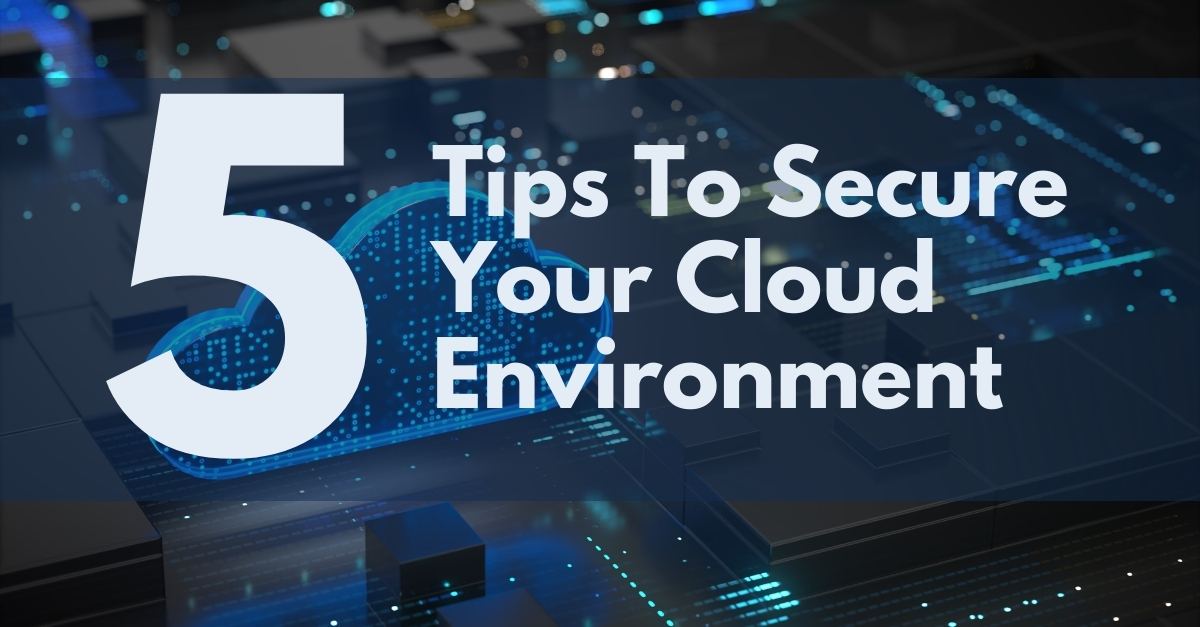5 Ways to Secure Your Cloud Computing Environment

Cloud computing has revolutionized the way businesses manage and deploy IT resources. With the massive shift towards cloud-based solutions, the importance of securing these environments has never been more critical. Ensuring the safety and integrity of data in the cloud involves understanding and implementing a variety of security measures. In this comprehensive guide, we will explore five essential methods to secure your cloud computing environment, helping you protect your sensitive data from unauthorized access, cyber threats, and vulnerabilities.
1. Implement Strong Access Control Measures
The first line of defense in securing your cloud environment is controlling who can access what. Here’s how you can strengthen your access control:
- Identity and Access Management (IAM): Use IAM to grant access based on roles and policies. Ensure that the least privilege principle is applied, granting only the necessary permissions to perform specific tasks.
- Multi-Factor Authentication (MFA): Implement MFA to add an extra layer of security. This can significantly reduce the risk of unauthorized access, even if passwords are compromised.
- Regular Audits: Conduct periodic access reviews to ensure that permissions are still necessary and current employees have appropriate access levels.
2. Utilize Data Encryption
Encrypting data at rest and in transit is crucial for protecting sensitive information:
- Data at Rest: Encrypt all data stored in the cloud. This means that even if a malicious actor breaches your cloud storage, the data would be unreadable without the decryption keys.
- Data in Transit: Use protocols like SSL/TLS for data transfer to ensure that data being sent to or from your cloud services remains secure.
- Key Management: Implement robust key management practices, ensuring keys are securely stored and regularly rotated.
🔑 Note: Remember to securely back up your encryption keys. Losing access to these keys can mean losing access to your data forever.
3. Regularly Update and Patch Systems
Software vulnerabilities are a common entry point for attackers. To mitigate this:
- Automate Updates: Enable automatic updates for your cloud provider’s operating systems, applications, and services to ensure you're protected against known vulnerabilities.
- Stay Informed: Keep an eye on security advisories from your cloud service provider and apply patches as they become available.
- Vulnerability Scans: Regularly scan your cloud environment for unpatched vulnerabilities using automated tools.
4. Network Security Configuration
Securing your cloud environment also involves configuring network security:
- Virtual Private Cloud (VPC): Create private network structures to isolate your cloud resources, limiting public access to only necessary services.
- Firewalls: Implement both cloud provider's firewall services and traditional firewalls to filter network traffic according to your security policy.
- Network Segmentation: Divide your network into segments, allowing you to isolate critical applications and services, reducing the spread of potential attacks.
5. Backup and Disaster Recovery
Cloud environments should be resilient against data loss and service disruption:
- Regular Backups: Automate and schedule regular backups of your data to protect against accidental deletion, corruption, or malicious attacks.
- Off-site Storage: Ensure backups are stored in a geographically separate location from your primary cloud environment.
- Disaster Recovery Plans: Develop and test comprehensive disaster recovery plans to ensure business continuity in the event of a major outage.
📝 Note: Regularly test your recovery processes to ensure they work as expected. Real incidents are not the time for first-time testing.
Implementing these strategies can significantly enhance the security of your cloud computing environment. They provide a multi-layered approach to security, addressing various vulnerabilities from access control to network configuration. Remember, cloud security is an ongoing process, requiring vigilance, updates, and continuous improvement to stay ahead of emerging threats.
What is the least privilege principle?
+
The principle of least privilege (PoLP) in IT security means granting users, applications, or systems the minimum levels of access or permissions they need to perform their functions. This minimizes the risk of unauthorized access to data and reduces the damage an attacker can cause by leveraging stolen or compromised access.
How often should I conduct security audits in my cloud environment?
+
Security audits should be performed at least quarterly or following significant changes to the environment, like system updates, changes in user access, or after a security breach to ensure ongoing compliance and effectiveness of security measures.
Can network segmentation help in cloud security?
+
Yes, network segmentation in the cloud helps by breaking your network into isolated segments or zones. This limits lateral movement of threats within your cloud environment, thereby reducing the attack surface and potential impact of breaches.
Related Terms:
- Cloud security best practices checklist
- Security for cloud computing
- Cloud computing best practices
- How to secure the network
- Securing compute services
- what are cloud security types



